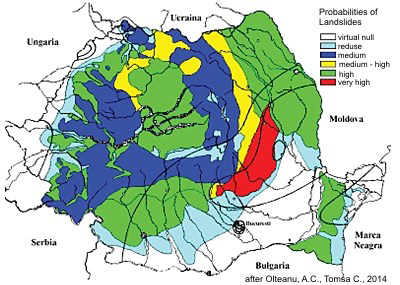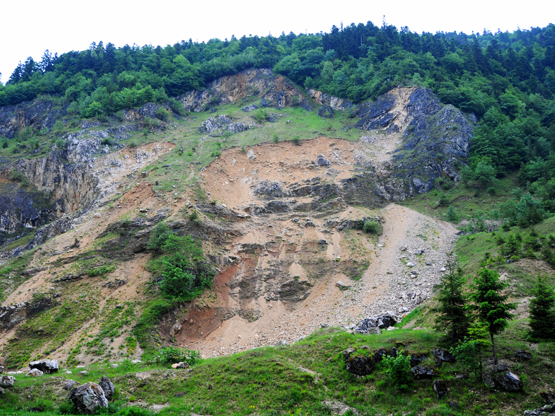Historical disasters
5. Landslides
5.3. Romania
Landslides represent a common geomorphic hazard in Romania, threatening property and infrastructure mainly in the Carpathian Mountains and hilly regions, which account for more than 60% of the territory. In this regard Romania represents one of the countries most affected by landslides in Europe. Landslides are often associated with other major natural hazards, such as flood and earthquake. Although in Romania the number of human victims of this natural hazard is very low, landslide causes substantial damage to human property in affected regions. An increase in landslide frequency and magnitude has been observed in recent years, related to extreme rainfall resulting from climate change.

Unfavorable natural conditions such as: non-uniformity in the slope lithology, high slope gradients, and high rainfall rates combined with engineering works have accelerated local instability by increasing surface runoff and erosion. This has lowered the base level in the adjacent valleys/gullies by 1-2 meters, increasing the slide potential.
An example for the eastern part of Romania's Carpathian Mountains is the
Zemes landslide, which extends over 1.4 -1.8 kilometers in length, with a width of around 500 meters at the slope base and a total change in elevation of about 350 meters. This and similar slides cover 30-40 percent of the land on both sides of Tazlaul Sarat Valley. They have developed especially on soft or altered rocks. Unfortunately, these recurrent landslides produce an asymmetric shape to the valley, which increases the potential for landslide reactivation because of infiltration of water into the ground.

Most landslides in Romania occur as a result of a combination of:
1) poor forest management 2) intense rainfall.